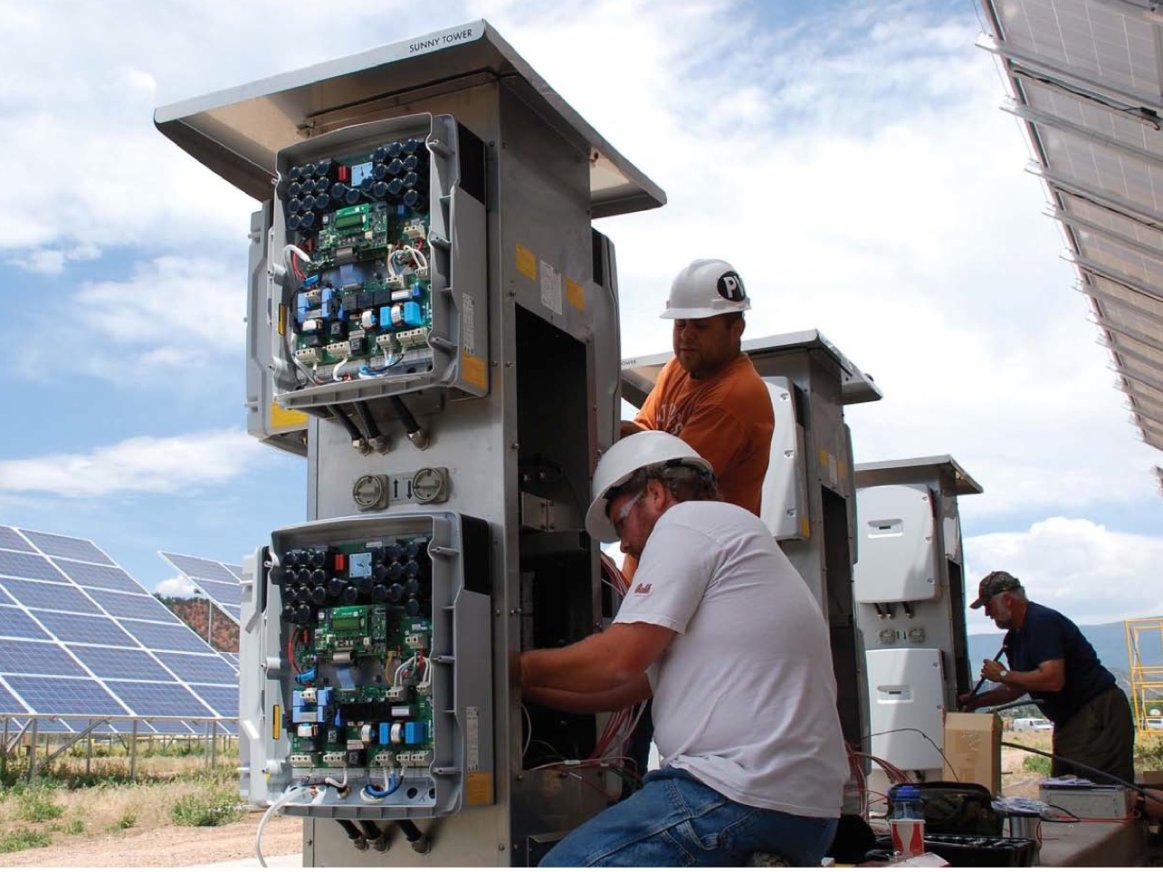
There are many inverters for PV systems that can be installed outdoors. In fact, most grid-tied inverters are designed for outdoor use, although most off-grid inverters are not weatherproof and are generally mounted indoors, close to the battery bank. As a rule, inverters designed for outdoor use may be installed either outdoors or indoors, however indoor inverters can only be installed indoors.
The great majority of grid-tied or string inverters available today are designed for outdoor installation. A survey of all the major manufacturers shows that nearly all of their products are encased either in NEMA 3R (protection against falling dirt, rain, sleet, and snow) or NEMA 4X (additional protection against windblown dust, splashing water, hose-directed water, and corrosion) enclosures.(see tech help article What does NEMA stand for?)
When choosing the site for installing an inverter, it is essential that the environmental conditions specified by the manufacturer be maintained. There are both temperature and humidity requirements for these devices. The installation must provide adequate ventilation and heat dissipation and the units must be protected from corrosive vapors or fine particles that may be present in some environments. For example, inverters should be kept away from such potential sources of vapor as swimming pool pumps or storage containers of chlorine.
Apart from the manufacturer’s requirements for the units, there are also safety and other regulatory factors that must be considered. The inverter should not be located where it may be a hazard to people passing by it, such as in a narrow passageway. It also should not be located where it may be damaged by nearby activities or passing vehicles as may happen near the entrances of garages or workshops. These items are intended to make sure the installed equipment is appropriate for its location and doesn’t pose a hazard to anyone who might come into contact with it. Such issues as well as the requirement that all equipment be installed per the manufacturers’ instructions are explicit elements of the National Electrical Code.
A final, but by no means less significant issue is that of inverter performance. Like most electronic devices, inverters operate more efficiently at cooler temperatures. While most grid-tied inverters are designed for outside installation, they should not be mounted in direct sunlight, as this will degrade their efficiency. In addition to the lost output, the lifetime of the unit is likely to be shortened. Even though PV financial models generally include inverter replacements over the lifetime of the system, designing an installation to prolong inverter life rather than shorten it is the most sensible strategy. Thus, even inverters that incorporate robust outdoor packaging should be kept shaded, even if it means installing an awning over them.
The ideal installation site for inverters is cool, dry, dust-free and indoors. However, there are a growing number of applications for which this is impractical or undesirable. With appropriate system design, an outdoor inverter installation can be a reasonable and successful option.
Resources
- Planning and installing photovoltaic systems: A guide for installers
- "String Inverters" SolarPro Magazine, Issue #4.5
(photo credit: Scott Ely http://sunsensesolar.com/)